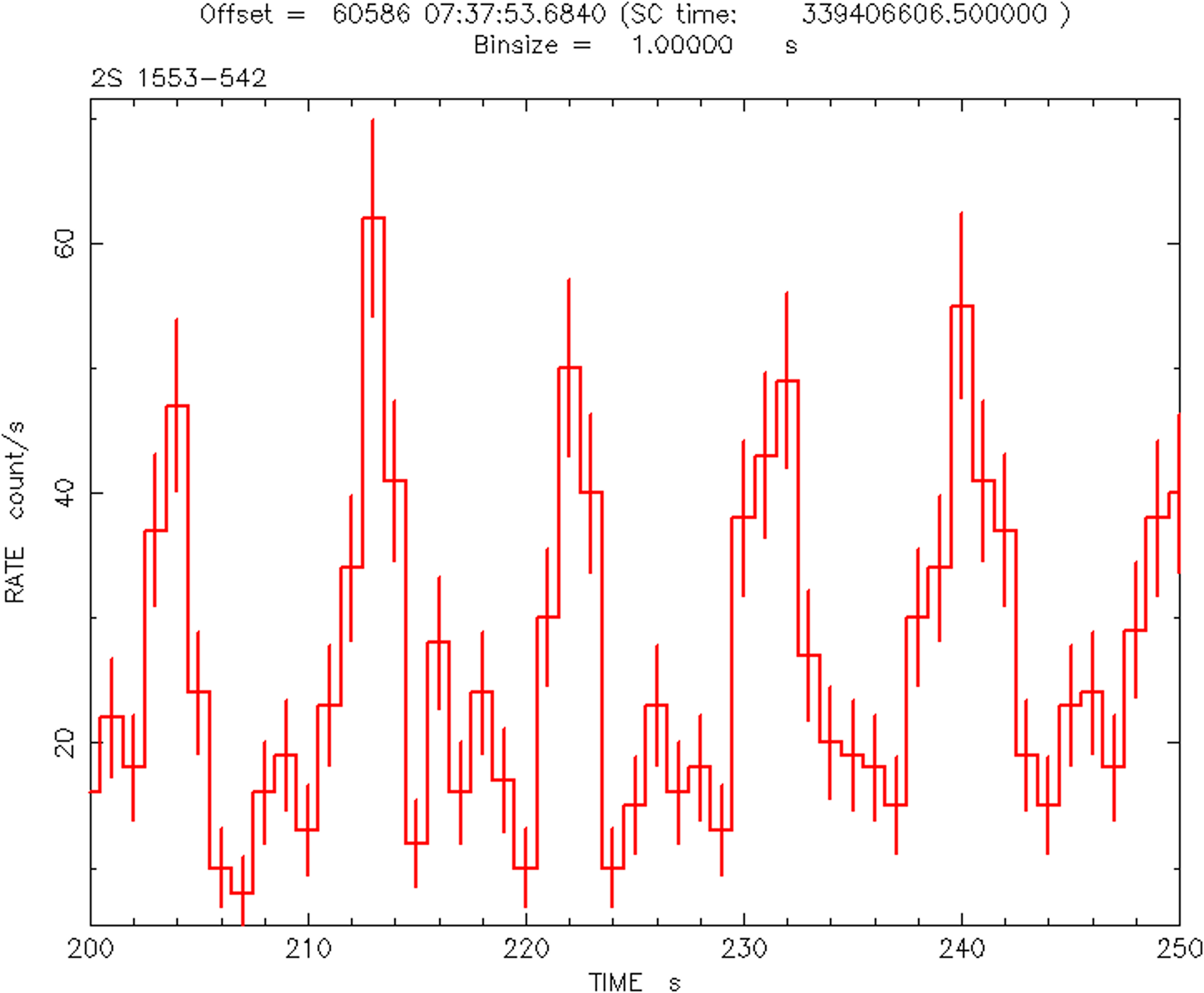NICER / ISS Science Nugget
for October 10, 2024
Approaching "critical luminosity"
With U.S. and international partner facilities (JAXA's MAXI, India's AstroSat, and NASA's NuSTAR and Fermi telescopes), NICER is observing a new outburst of the binary system 2S 1553-542, a high-mass "Be"-type star that episodically transfers matter to its neutron-star companion. (In a mildly elliptical 31-day orbit, the average separation of the two stars is 200 light-seconds; the Earth-Sun separation, in comparison, is 500 light-seconds.) Following up a published alert from the MAXI team about a potential new outburst, NICER observed 2S 1553 on 3 October, confirming pulsed X-rays at the known spin period of the neutron star, as reported in Astronomer's Telegram #16846 by M. Mandal (Midnapore City College, India) and collaborators. The neutron star's strong magnetic field channels the accretion flow into a column of hot plasma, which emits X-rays in a beam swept around by the star's rotation every 9.28 seconds.
Previously seen in outburst in 2021, 2S 1553 offers an opportunity to study the effects of the accreting matter on the neutron star's rotation (it is spun up to higher rates, thanks to the transfer of angular momentum from the companion's orbit) and the physics of powerful collisions between matter and radiation. NICER observed 2S 1553 again two and four days after its initial look; the latter observation was coordinated with NuSTAR. The system was found to be 60% brighter, and within a factor of 3 of the "critical luminosity," the point at which the rate of radiated energy is so high that the momentum carried outward by photons begins to push back on the infalling gas. Details of geometry - the precise shape of the accretion column and whether the emitted radiation is widely or narrowly beamed, together with the strength of the local magnetic field - matter greatly in determining which side prevails, but any observed trends in overall X-ray brightness, spectrum, and the shape of the X-ray pulsations carry information (such as pressures, velocities, and temperatures) about the supersonic fluid-flow shocks that form in the extreme gravitational, magnetic, and high-density environment near the surface of a neutron star.

Figure caption: Individual pulses of X-ray emission, spaced 9.28 seconds apart, are seen with NICER from the neutron-star binary system 2S 1553-542, on 3 October, 2024. The stepped red trace shows the rate of X-ray detections, with estimated error bars, measured in 1-second bins, each peak representing the passing of an X-ray beam, swept with the neutron star's rotation, across the telescope.
<< Previous
Main Index
Next >>